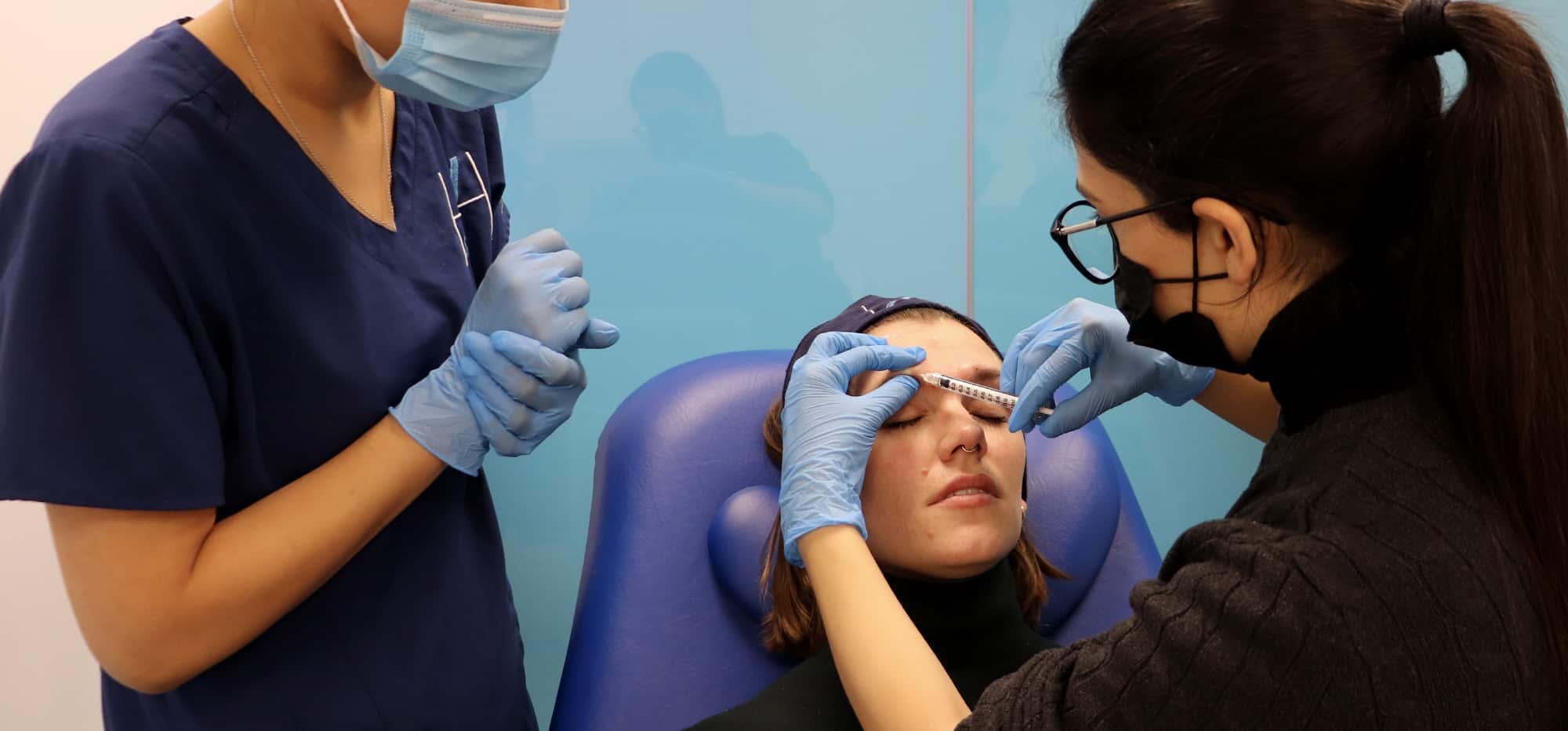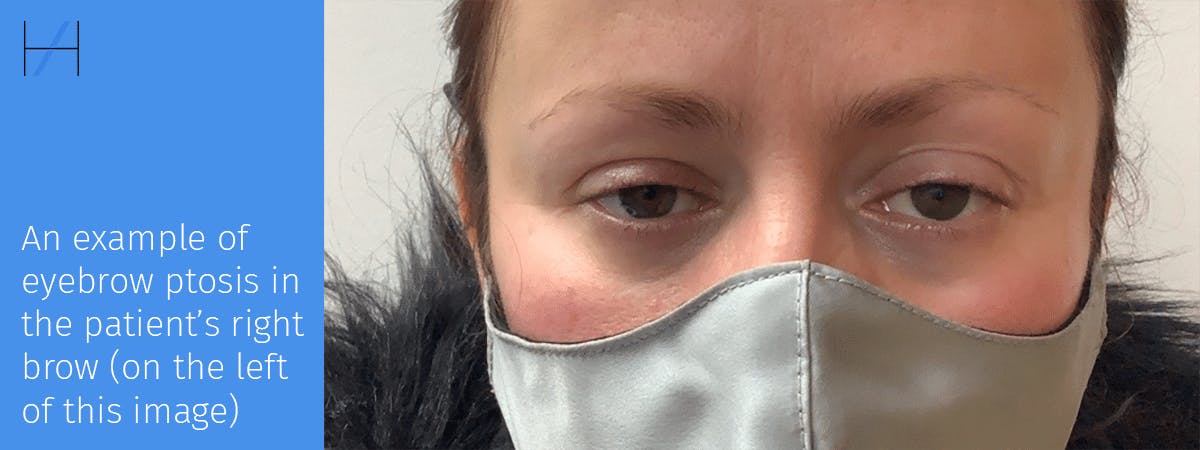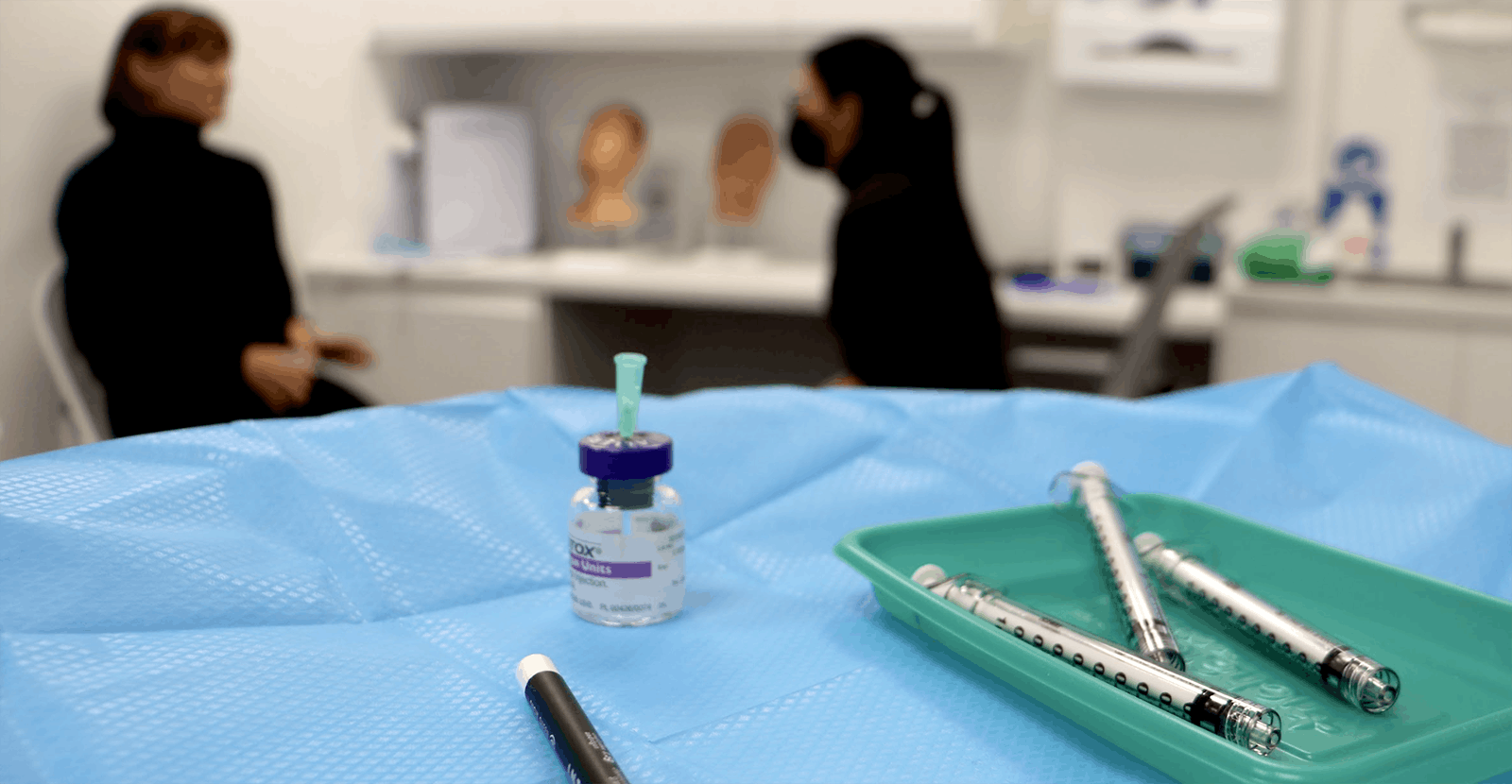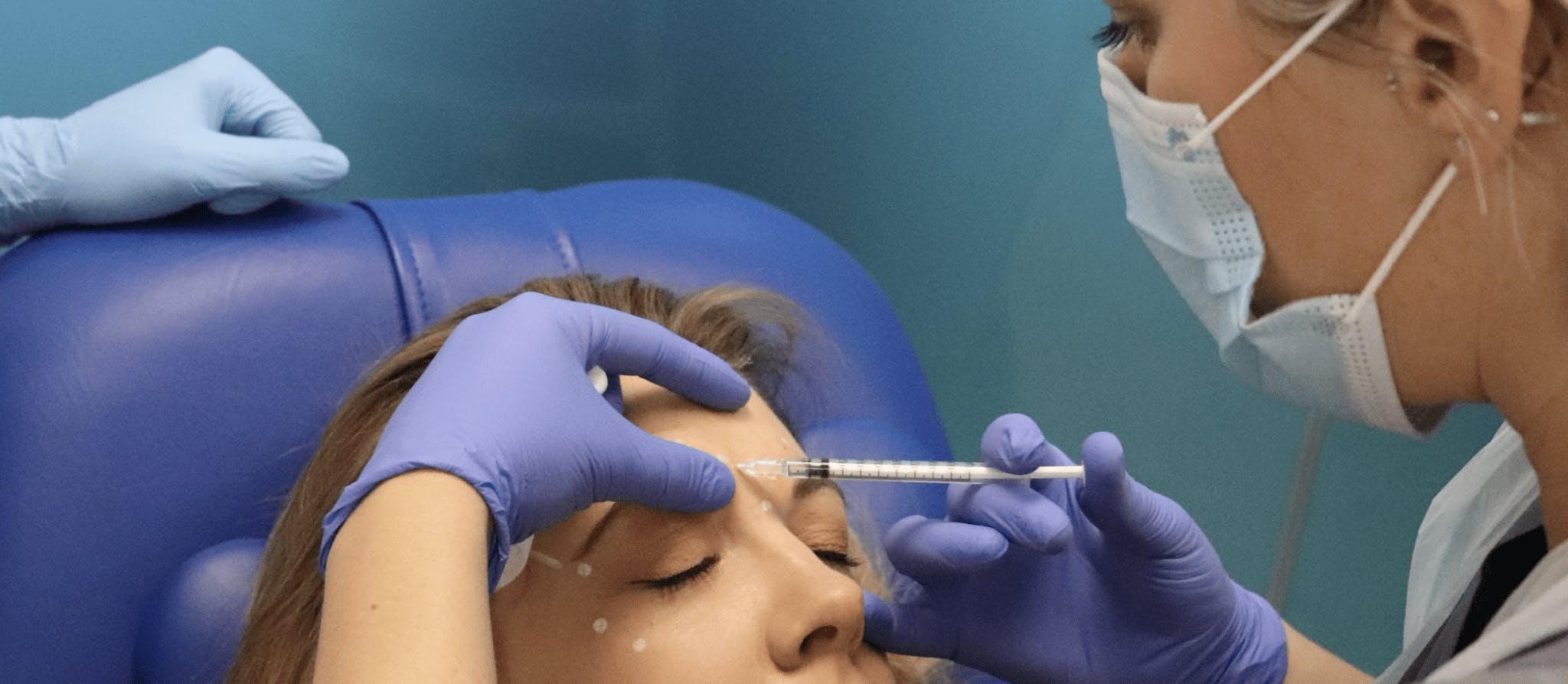What causes Botox Diffusion and how to manage it

Botox diffusion refers to the spread of the drug into the surrounding area from where it was intentionally placed. Diffusion is crucial for the treatment to work in the desired target muscle. However, if it spreads too far or too deep, it can cause complications.
Diffusion is a process invisible to you. Also, toxin results gradually reveal themselves over days, rather than immediately. As such, dealing with toxin spread-related complications as a new injector can be unnerving.
We spoke to Dr Carol Mastropierro, cosmetic doctor, Level 7 graduate and clinical trainer, to find out more about botox diffusion...

WHAT DO NEW INJECTORS NEED TO KNOW ABOUT BOTOX DIFFUSION IN RELATION TO INJECTION POINTS?
“Botulinum toxin spread depends on the dilution used to prepare the vial and the amount injected,” explains Dr Carol. “With a standard 2.5ml dilution and injections of 2-4 units, the toxin will spread around 1cm in diameter from the injection point.”
She adds, “It has been suggested that higher dilution (lower concentration) encourages the spread of toxin. This is useful for the broad areas but may cause complications in small muscle targets. It also, in theory, may lessen the duration and magnitude of the effect. Using the manufacturer’s recommended reconstitution guidelines is best practice.”
Dr Carol also notes, “Interestingly, patterns of muscular contraction may also affect diffusion direction.”

Botox diffusion and the Glabellar complex
“A challenging or risky area for diffusion is the glabellar complex,” she warns. “When treating the glabella, it’s important you’re extremely familiar with the injection depths of the different muscles.”
“Marking out this muscle is fairly easy when assessing the patient whilst frowning,” says Dr Carol.
Procerus: “The procerus poses a very small chance of toxin migration, especially if you palpate and treat the muscle directly,” she advises.
Corrugator supercilii: “The corrugator supercilii muscles can be found in or above each brow and are easy to mark when your patient frowns. They lie directly above the frontalis attachment and the eye muscles,” explains Dr Carol.
“Medial corrugators require intramuscular injections, while the lateral corrugators need a more superficial intradermal approach.”
“The risk of botox diffusion is especially high with the lateral corrugators,” she cautions.
“When treating the lateral corrugators, place your toxin at least 0.5cm medially from the tethering observed on the skin when the patient is frowning.”
“If you are too high or too lateral when injecting this point, your toxin could spread to the frontalis and result in brow heaviness or ptosis,” she warns.
“Conversely, if you inject the lateral corrugators too deeply, toxin may migrate down, affecting the levator palpebrae superioris muscle. This would present as lid ptosis.”

WHAT HAPPENS IF BOTOX SPREADS FROM ITS ORIGINAL POINTS? CAN THIS BE CORRECTED?
Dr Carol offers the following advice for managing botox diffusion...
Glabella
“Unfortunately, in case of toxin spread from glabella injections, little can be done,” she confirms. “If there’s any brow heaviness from frontalis spread, toxin could potentially be injected into the glabella itself, if there’s an indication to do so. By this, I mean if you still observe movement in the corrugators or procerus.”
Lid ptosis
“Eyelid droop can be managed with Iopidine eye drops for temporary symptom relief. Injecting the tarsal muscle has also been shown to alleviate lid ptosis,” she notes. Adding, “However this is a new and advanced procedure, not often performed, especially by new aesthetics practitioners.”
Frontalis
“There isn’t much risk of toxin diffusion here, as the frontalis is the only muscle in the forehead,” states Dr Carol. “What is important here is keeping your injections roughly 2cm above the orbital rim. Don’t use the eyebrows as a landmark! You must also evaluate the general risk for heaviness in each patient, as not everyone is suitable for frontalis treatment.”
Orbicularis oculi
“Lastly, the orbicularis oculi (OO) muscle is a thin sphincteric muscle around each eye,” advises Dr Carol. “In standard practice, the lateral outer portion of the muscle is injected through three injection points in a C-shape 1cm away from the orbital rim.”
“It’s important you keep these injections on the muscle. This can be easily checked by asking the patient to smile or squint and seeing all the points moving in together. You must also stay very superficial,” she specifies. “If you inject too deeply here, especially at the lower point of the OO, toxin may spread to the zygomaticus muscle. This may then affect the corner of the mouth on that side.”
“Again, there isn’t much that can be done for this, but it should resolve in about 6 weeks.”

WHAT INFORMATION SHOULD BE CONVEYED TO PATIENTS TO ENSURE THEY DON'T CONTRIBUTE TO ANY BOTOX DIFFUSION?
“Limiting the toxin spread is mostly due to correct technique, so it’s a matter for you to manage as an injector,” instructs Dr Carol. “However it’s important for your patient to follow aftercare, avoid touching, pressure and massages in the areas treated.”
“Some say that using vibration, such as that of an electric toothbrush, may speed up the breakdown of the toxin. It is said to also activate muscle in areas where toxin diffusion is causing problems. Personally, I don’t believe this has enough supporting evidence,” she advises.

BOTOX TRAINING FOR HEALTHCARE PROFESSIONALS
Learning how to safely and effectively inject botulinum toxin is one of the first skills you’ll acquire as an aesthetics practitioner.
You may be legally able to practise administering toxin to patients following a short botox training course. However, there’s a lot more you should know if you want to be a safe aesthetics specialist.
An understanding of facial anatomy is paramount not only for the obvious reasons of patient safety and avoiding complications. It also helps you to personalise your toxin treatments, offering a bespoke approach based on each patient’s unique presentation. This type of premium service will help you to distinguish your aesthetics practice from other less qualified injectors.
If you’re a doctor, dentist, nurse or midwife looking to undertake exceptional aesthetics training in toxin and dermal fillers, check out the Injectables Training section of our website. Or, for personalised advice, contact our courses advisor who will answer all your questions and advise on the best options based on your needs.
All information correct at the time of publication.
Download our full prospectus
Browse all our injectables, dermal fillers and cosmetic dermatology courses in one document
By submitting this form, you agree to receive marketing about our products, events, promotions and exclusive content. Consent is not a condition of purchase, and no purchase is necessary. Message frequency varies. View our Privacy Policy and Terms & Conditions
Attend our FREE open evening
If you're not sure which course is right for you, let us help
Join us online or in-person at our free open evening to learn more
Our Partners














STAY INFORMED
Sign up to receive industry news, careers advice, special offers and information on Harley Academy courses and services

